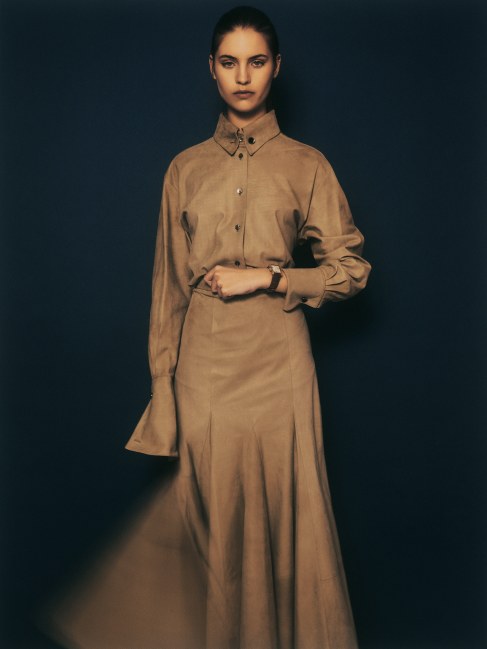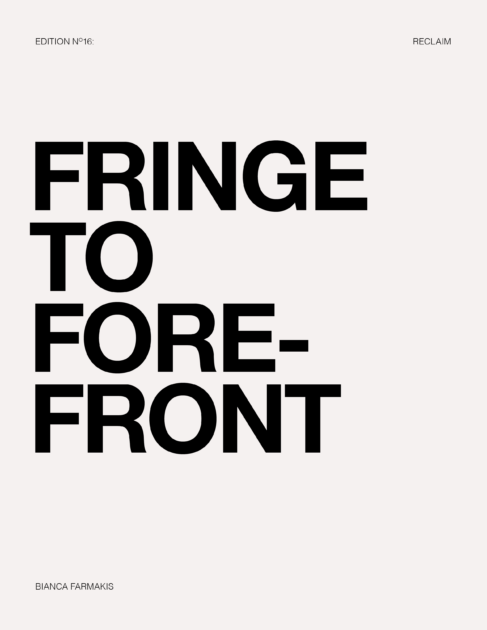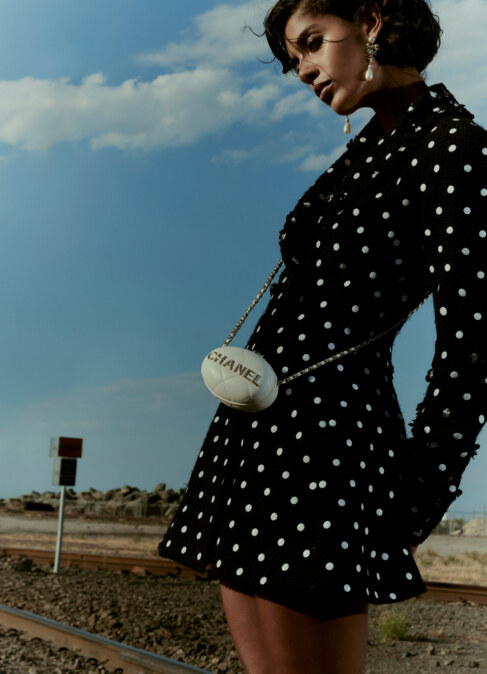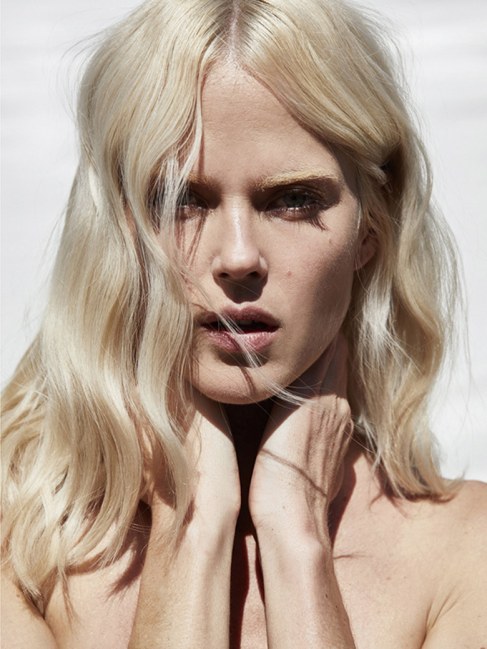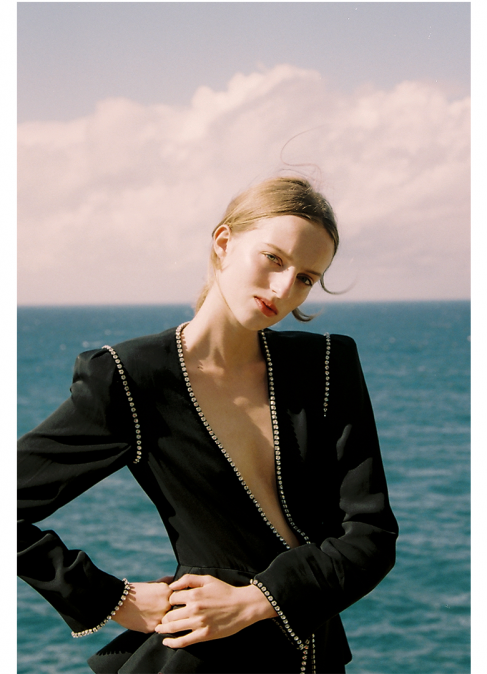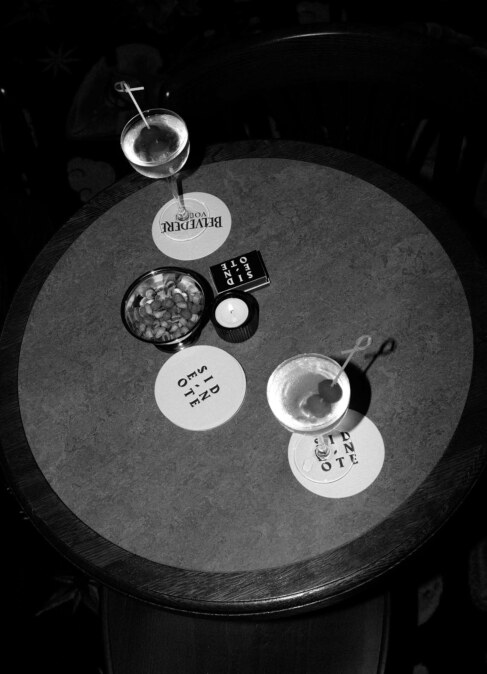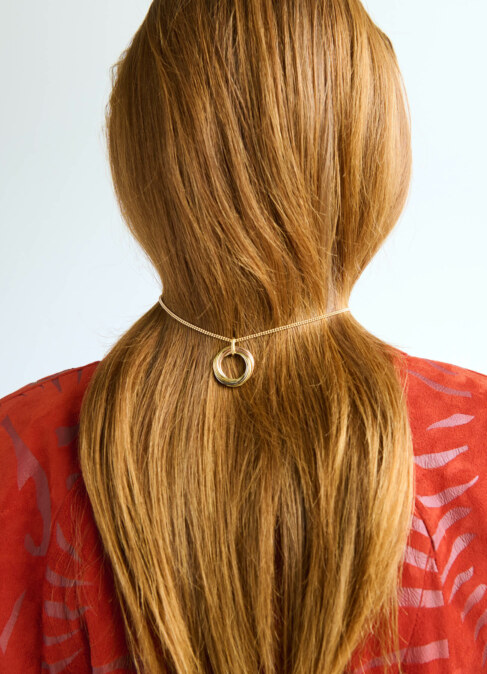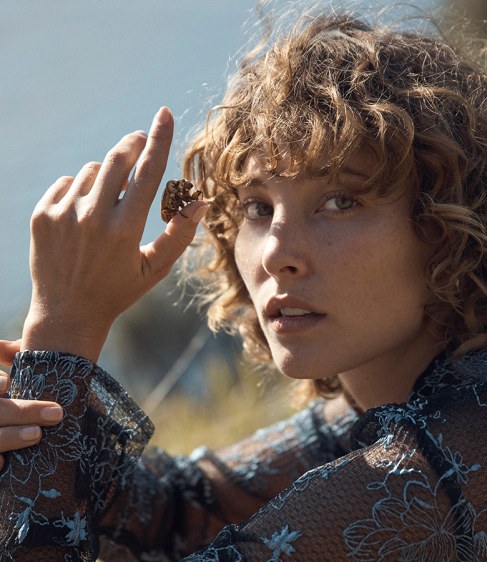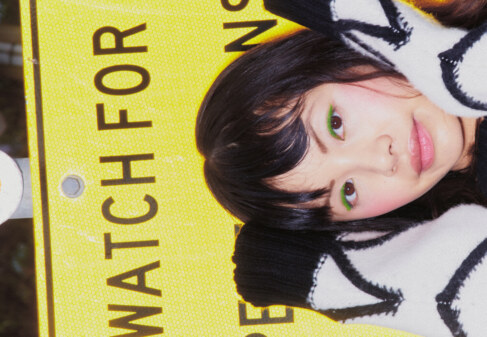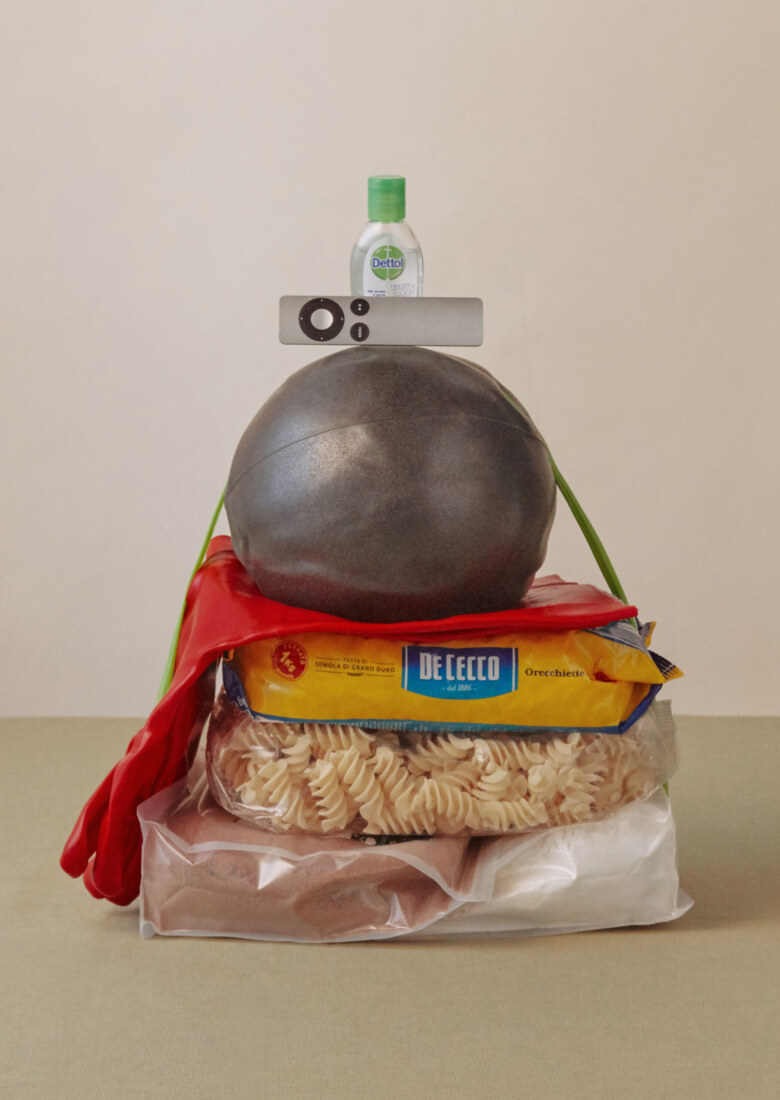
I HAVE MEASURED OUT MY LIFE WITH COFFEE SPOONS BY VICTORIA PEARSON AND ANNA POGOSSOVA
WRITTEN BY: Victoria Pearson
PHOTOGRAPHED BY: Anna Pogossova @B&A
For I have known them all already, known them all:
Have known the evenings, mornings, afternoons.
There is a semi-deflated black orb gathering dust on a shelf in my home that taunts me whenever it veers into my eyeline. Its pearlescent sheen and accompanying yoga mat are silent and still, but may as well be shrieking and shaking with the force at which I’m confronted by their daily cry: We have been abandoned.
This ball, as innocuous as it seems, is my personal relic of COVID-19; proof of a swiftly abandoned attempt at at-home Pilates. What started as an earnest attempt at defined abdominals quickly dissolved into a slew of half-assed excuses and Instagram-fuelled paralysis. The daily scroll yielded evidence of fitness challenges and push-up parties and targeted ads for Lululemon tights. Rather than harness this collective energy to self-optimise I became overwhelmed, and then exhausted, by it. Enter: the discarded ball.
It’s difficult to hypothesise what the defining artefacts of COVID-19 will be while we are still very much within its arc. If you’d asked three months ago how I’d describe pandemic life the answer would fall somewhere between awkward Zoom cocktail catchups, Tiger King, iPhone news update notifications and all-consuming anxiety. Yet even that feels like another world – one where we thought lockdown would last a week or two and that coronavirus was essentially the flu.
Still, the question remains: What will we offer the future generations as proof of this uncertain, unsettling, stagnant period of existence? When all is said and done (if, ever, it is to be said and done) and we peer into the inevitable museum of this era, is the truest representation of the pandemic our Netflix logins? Packets of dried pasta? Wine bottle soldiers lined along kitchen benchtops? Dettol’s liquid hand sanitiser?
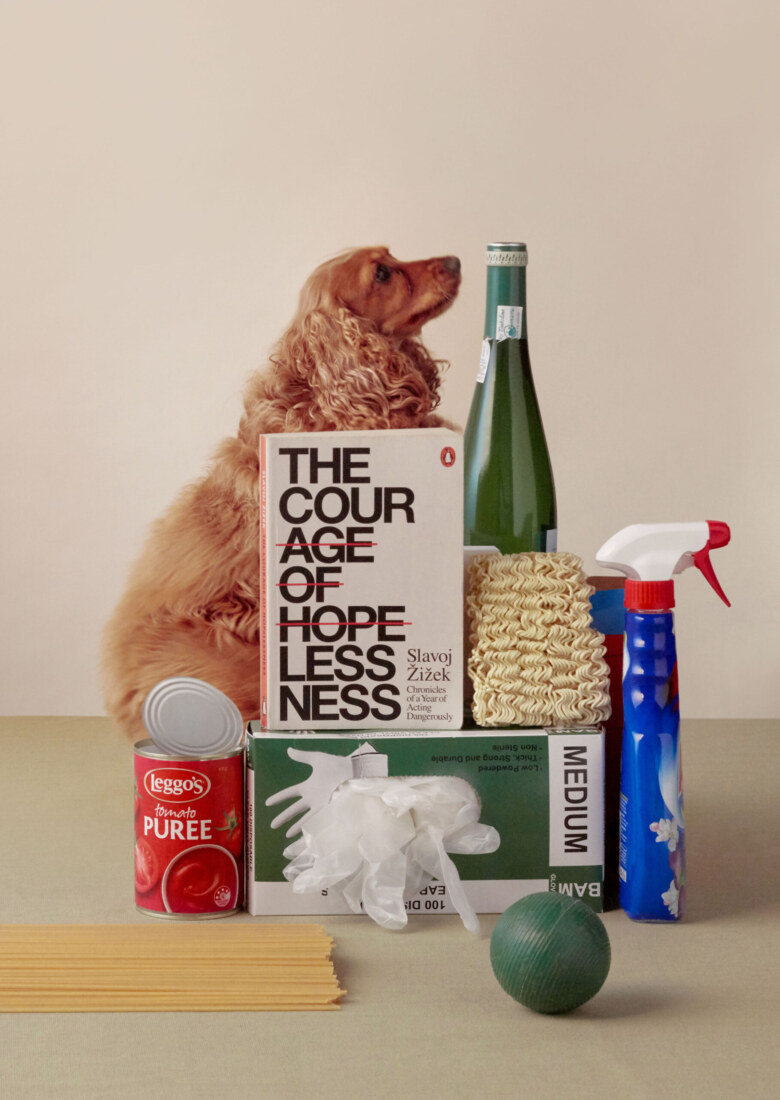
Or is it something intangible, more ephemeral? I find myself returning to a line from a T.S. Eliot poem, ‘The Love Song of J. Alfred Prufrock’:
I have measured out my life with coffee spoons.
Did it not ebb and flow in waves? Weeks of anxious, forced productivity melting into numbness, days where we couldn’t muster the energy or inclination to do anything other than cry in the shower or hit ‘Yes’ each time a streaming service asked if we were still watching. Yes, we’re still here. Still tethered to the tedious, unending nothing. No structure to the day, no escape from the monotony. With zero separation between home and work the only respite was chemical. So, we drank. Perhaps that is how they’ll define the time, when all is said and done (if, ever, it is said and done). A period of mid-to-critically-high-level imbibing, spending Job Keeper payments on wine and whiskey.
Will they chart the moment in relation to the amount of people who purchased puppies? Who purchased kennels and dog bowls and play toys and leashes, proudly unveiling their new companions through personalised social media accounts riddled with pet-related puns?
Or maybe on reflection 2020 will conjure images of sourdough starter, bubbling and alive. Soon to be bread, soon to be buttered, soon to be devoured as proof of humankind’s early dalliance with chemistry. Flour, water, yeast and salt – relatively cheap ingredients to reinforce our primal need for comfort and security. Is this how COVID-19 will be retold? We were sent to our homes and started comfort baking?
Time for you and time for me,
And time yet for a hundred indecisions,
And for a hundred visions and revisions,
Before the taking of a toast and tea.
Let’s say you have remained (so far) medically unscathed. Will you even remember all that time? All those beige hours spent in domestic limbo, or the precise details of the government mandated stroll you took each day? Studies say likely not. Memory researchers believe that these last few months (or year) will transpire into nothing more than a blur in the mind. Days, weeks, reviewed through fogged lenses. We might remember the initial panic – a hasty trip to the supermarket revealing empty shelves that once hosted toilet paper, rice, flour, hand wash. We will remember if a loved one gets sick, so charged with emotion is the recall. But on the whole our minds are not mental hard drives, and the accuracy with which we store our memories is shady, at best. Those long stretches of nothing are possibly the most accurate depiction of our day-to-day existence, and also the most difficult to quantify or describe. How will historians convey the Great Pause? “They did nothing, mostly, then brought out the puzzles.”
Do I dare
Disturb the universe?
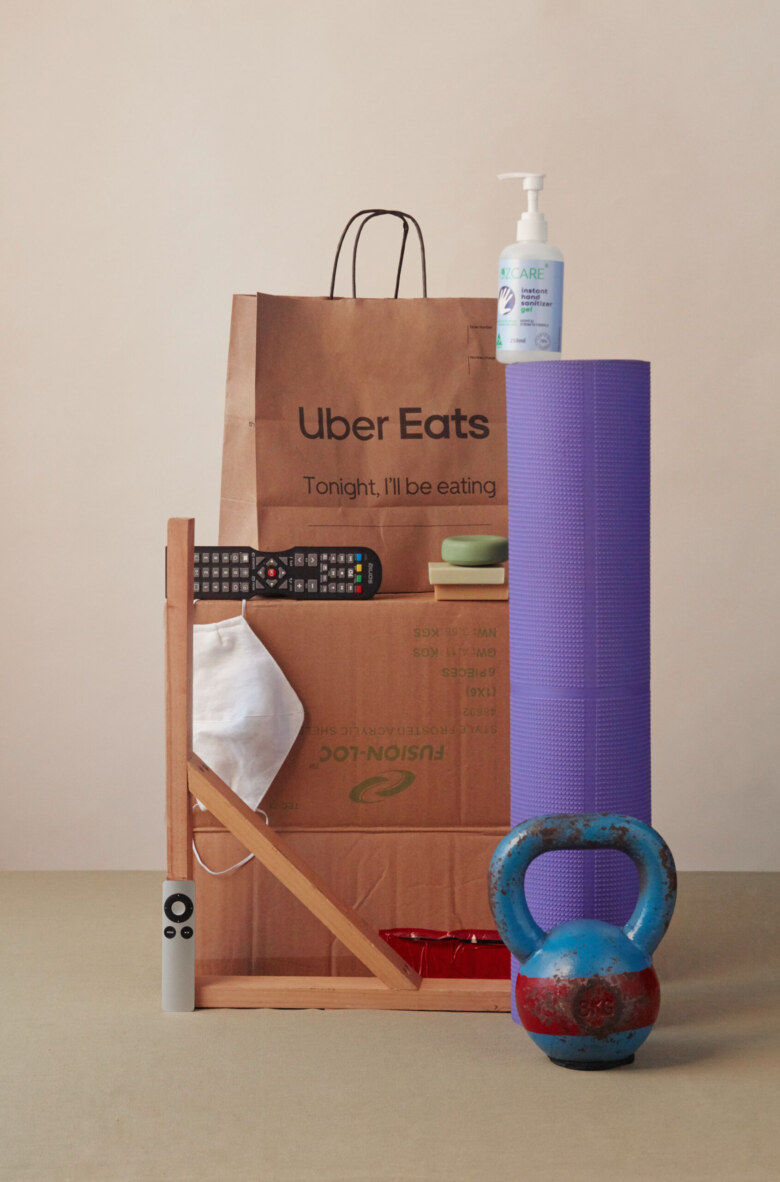
Or, perhaps, they will portray the shift; how after so much quiet there was suddenly loud noise. As though we had been hearing the world through a conch shell, faint whispers of the sea, before being violently awoken by the ocean’s roar. Perhaps they will describe how our COVID-imposed isolation was, ultimately, a necessary precursor to the Black Lives Matter demonstrations that kicked off in May this year following the murder of George Floyd by Minneapolis Police Department officer Derek Chauvin. How, in the absence of work or sport or socialisation, there was nothing to divert our attention, and not only were we watching, we were finally seeing. How COVID-19 had already exacerbated the economic divide (particularly in the United States but also closer to home), and the ensuing alchemy of racial injustice, isolation, inactivity and exasperation (stemming from the proliferation of misinformation) galvanised millions of people worldwide to protest, donate, sign and act.
They might recall how the face masks, initially adorned in defence of the virus, provided heightened elements of anonymity and allowed the enraged to take to the streets with a fraction more protection for their identities. How this accessory, historically construed as proof of lawless disobedience, was now perceived as an essential article of civic responsibility. And remember all that uninteresting time we spoke of earlier? They might explain how those long, lazy hours produced the fertile ground for radical opposition to the systemic racism, oppression and inequality that defined modern America, as well as the pervasive racial discrimination Indigenous Australians endured at the hands of our own deep-seated, implicit biases.
I hear talk of the old normal; a pining for “the way things were”. But it feels futile to pretend we can simply revert to the familiar rhythms of the past. This pandemic marks the space between an old era and a new. A space dotted with TikTok’s and abandoned attempts at painting, with sourdough and sanitiser, with panic attacks and true crime documentaries, with disturbing quiet and deafening noise, with frightened inaction and furious action, with life and death. Perhaps that is how this time will be remembered – as an era of brutal dichotomies. A period where the world as we knew it burnt to the ground, and in doing so brought us back to life. Perhaps, if we’re truly lucky, that is how historians will define the pandemic: “They measured out their lives with coffee spoons. Then the world cracked open.”
Poetry: The Love Song of J. Alfred Prufrock, T.S Eliot
–
We acknowledge the Gadigal people of the Eora nation as the traditional owners and custodians of the land on which this project was published. We pay our respects to Elders past and present.
